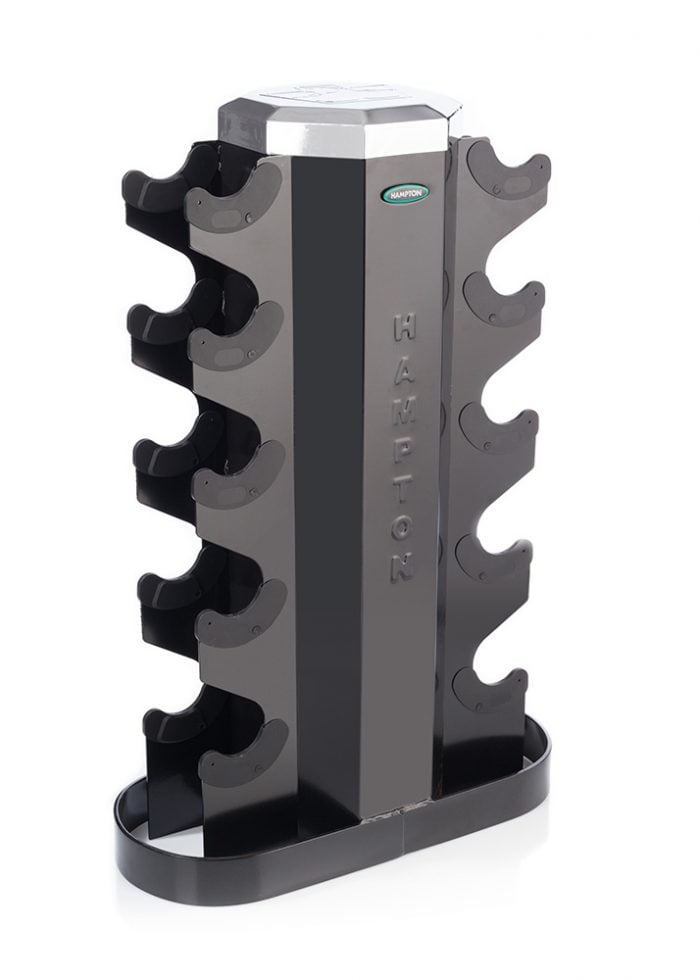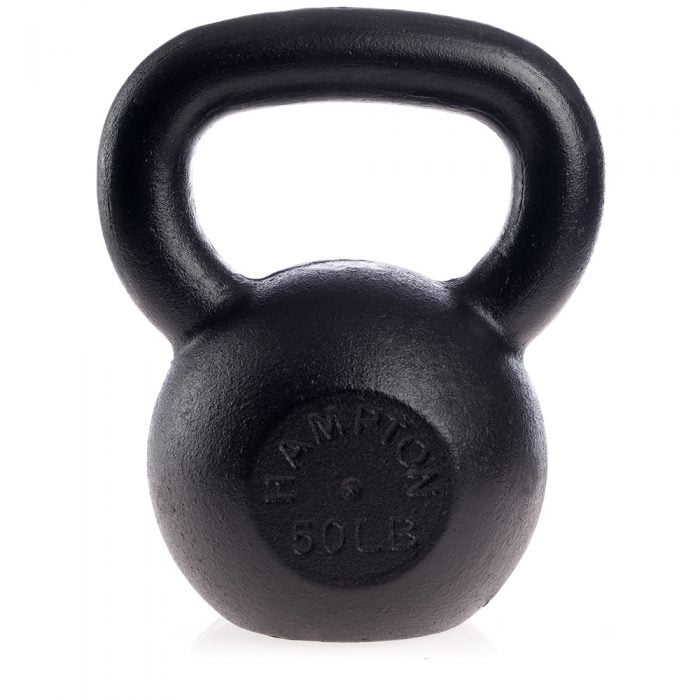When it comes to strength training, people often ask, “Which is the better piece of equipment for me, kettlebells or dumbbells?” The answer depends on which fitness goal you are setting out to achieve. Is the goal strength, stability, or power? What level are you at when it comes to training? Here we will lay out some factors that may help you decide if kettlebells or dumbbells are right for you.
The design and structure, weight distribution, and functionality all play roles in choosing the right strength training equipment for you. If you’re a beginner looking to build strength, a dumbbell is often a better choice as it has a more evenly distributed weight with the handle that allows for more reps. But suppose you are more experienced and interested in using a wider range of motion and setting a goal for more intense training or Olympic weightlifting. In that case, a kettlebell may be the better option.
Key Takeaways:
- While both are weights, kettlebells and dumbbells significantly differ in form and function.
- Handle shape and weight distribution are two significant differentiators between these two types of weights.
- Kettlebells are preferable for improving stability, while dumbbells are better for isolation exercises.
- Ultimately, the better type of weight depends on what exercise you’re doing!
Understanding the Basics of Kettlebells and Dumbbells
Let’s start with the basics. Obviously, these two pieces of equipment look VERY different. Dumbbells are seen in every gym and have been popular for ages. Kettlebells are now more popular than ever, although they have also been around for some time. Nowadays, more and more people are choosing kettlebells for their exercise time. Outdoor fitness classes often focus on kettlebell workouts, which are also popping up in some indoor gyms.
So what’s the difference between these two options? We’ll first break down some key elements that separate kettlebells from dumbbells.
Kettlebells:
- The weight sits below the handle.
- You can hold the handle with one or two hands.
- Typically made of cast iron.
Dumbbells:
- Weight is evenly distributed on both sides.
- The handle accommodates only one hand.
- There are a variety of different materials used to make dumbbells.
The Role of Free Weights in Resistance Training
Free weights add resistance to exercises, stimulating muscles to gain strength and build endurance. They are simple to use and a great addition to a workout with high repetition. They are great additions to any exercise because they give that extra boost to build strength and gain muscle.
Recommended products
-
Hampton Jelly-Bell® Urethane Dumbbells – Pairs
$66.00 – $268.00 -
2-Sided Vertical Rack | 5 Pairs
$340.00 -
Hampton Kettlebell – Black Powder Coated
$14.00 – $270.00
The Design and Structure of Kettlebells and Dumbbells
The most significant difference between kettlebells and dumbbells (besides how they look) is their weight distribution. Dumbbells consist of a short bar with weight at both ends, which means they evenly distribute the weight, while kettlebells carry the weight under the handle. If you are doing basic lifting with reps, a dumbbell may be your best bet, as the shape and distribution make for an easier grip throughout the workout. But if you are seeking a strength training workout that involves the full range of motion and can even add a mix of cardio, doing kettlebell swings is precisely the type of workout you need!
The Impact of Shape on Functionality
Another key kettlebell versus dumbbell distinction is their handle—the shape and how that impacts your movement patterns. Since a kettlebell’s handle is above the weight, it can accommodate two hands when gripped on the outside or the inside, while a dumbbell generally has room only for one.
These differences are particularly significant when it comes to the power and range of motion you can achieve during certain exercises. The kettlebell’s handle and uneven weight distribution make it ideal for building strength while improving full-body motion and balance.
Weight Distribution: A Key Differentiator
Kettlebells and dumbbells have distinct shapes, allowing for different weight distributions. A kettlebell has a bell-like body (hence the name) featuring a ball and a curved handle with the ball of the weight underneath. So, a kettlebell’s weight is distributed right underneath the handle. On the other hand, a dumbbell consists of a straight handle with two equally sized weights on each end so that the weight is evenly distributed. In turn, a kettlebell provides less stability than a dumbbell. Therefore, this type demands more from your body to keep steady.
Handle Shapes and Their Influence on Range of Motion
Another key kettlebell versus dumbbell distinction is their handles. The difference between the kettlebell handle and the dumbbell handle shape impacts your movement patterns. Since a kettlebell’s handle is above the weight, it can accommodate two hands when gripped on the outside or the inside, while a dumbbell only has room for one hand.
These differences are particularly significant when it comes to the power and range of motion you can achieve during specific exercises. While you can do this swinging motion with a dumbbell, it may be less effective (or comfortable) due to the tool’s equal weight distribution and straight handle.
The Practical Differences in Usage
One big difference in using kettlebells vs. dumbbells in your workout may be the amount of time you need to invest while getting the same effect. Kettlebell training is a great way to get a full-body workout since it requires you to simultaneously use your lower and upper body. Kettlebell workouts also burn calories and build endurance by performing rapid movement exercises like kettlebell swings in the same way that you would in going for a run. Meanwhile, dumbbells are great for isolation exercises or moves that target a specific muscle group rather than multiple.
Stability Challenges with Kettlebells and Dumbbells
For strength, you need stability. Generally, a dumbbell is more stable, so you should opt for those when you are a beginner, would like to avoid injury, or are targeting specific muscle groups. However, a kettlebell’s off-center of gravity can challenge a muscle in a way that dumbbells sometimes are not as effective.
The Role of Kettlebells in Enhancing Stability
Kettlebells can also enhance stability by challenging your range of motion and keeping you on your toes (surprising your muscles) by doing exercises that have a more significant impact than some toned-down dumbbell exercises.
The Advantage of Dumbbells in Isolation Exercises
On the other end of the spectrum, dumbbells are your best bet when you are looking to do isolation exercises for a particular group of muscles. You can do repetitive motions with any size weight and maintain a steady routine to effectively build strength in a specific area.
Exercise-Specific Considerations
Obviously, if you want to do kettlebell swings, you will want to use a kettlebell! In theory, you could grab a dumbbell and attempt to do the same thing, but why mess with using a dumbbell when a kettlebell is specifically designed for such an exercise? Similarly, doing bicep curls with a pair of dumbbells is the obvious choice.
Power Movements: The Strength of Kettlebells
When it comes to snatches, cleans, and more of those traditional power exercises, kettlebells are the perfect fitness equipment.
Isolation Exercises: The Domain of Dumbbells
An isolation exercise is a single-joint exercise, meaning you utilize only one joint during the movement—elbow, shoulder, etc. A dumbbell has that evenly distributed weight which is more stable than a kettlebell, so you handle more reps with less work from your stabilizer muscles.
The Influence of Handle Length on One-Handed vs. Two-Handed Exercises
With dumbbells, the handle length only allows one hand to fit between the weight on each side. A kettlebell has more wiggle room when doing one or two-handed exercises. It comes down to what you feel comfortable with and the types of exercises you are performing.
Choosing the Right Weight for Your Workout
With kettlebells and dumbbells, you need to pick the right sized weight to get the most effective workout and prevent overstraining or causing injury. If you are doing a lot of reps with your dumbbell, it’s best to start at a lower weight and build up to the heavier weight as you progress. With kettlebells, because you are starting with some pretty intense exercises, no matter what the action, it is best to start low and move on to heavier levels once you have more experience using this equipment style.
The Role of Workout Goals in Equipment Selection
As with any purchase, you must choose the right equipment for your specific goal! If you’re looking to pack a load of power and cardio into a short burst of energy, kettlebells may be your best bet. Purchasing dumbbells is an excellent investment if you are a fitness enthusiast who likes a steady repetition of controlled movement.
Strength and Muscle Building: The Case for Dumbbells
If your fitness goal is to build strength and muscle and isolation is your focus, then a pair of dumbbells will be your new best friend. Dumbbell deadlifts, bent-over rows, bicep curls, and lateral flys are all great exercises to build strength and muscle.
Weight Loss and Cardio Training: The Case for Kettlebells
Surprising your body is a great way to achieve your weight loss goals. Kettlebells get the job done every time! There are so many different exercises that you can do with kettlebells that allow you to work several muscle groups at once. Too, with kettlebells, the bursts of repetitive energy allow for a fantastic cardio workout that can pack the same punch as a brisk walk, run, or even kickboxing.
The Versatility of Kettlebells and Dumbbells
These days, you can use dumbbells in so many more exercises than the typical bicep curls. Trainers are adding them to workouts, performing lunges or doing hip thrusts with a dumbbell balancing on the waist. Kettlebells, too, are being used for squats and lunges and even as a doorstop in a pinch! But seriously, adding dumbbells and kettlebells to workouts has become a popular way to get even more from an otherwise ordinary exercise.
The Benefits of Incorporating Both Tools in Your Routine
Both tools are great for building strength, and adding both to your routine can help on days you want to break through the mundane or days you are looking for some low-impact steady movement that controlled repetition provides.
The Potential of Kettlebells and Dumbbells for Dynamic Movements
Choose a kettlebell over a dumbbell if your goal is to build dynamic strength. By performing the more popular kettlebell movements like swings and snatches, multiple muscle groups will work harder together than with dumbbells.
Choosing Your Preferred Free Weights
Free weights are made from different materials than just steel these days. There is rubber, neoprene, iron, and urethane. They can also come with hex-shaped heads or round. There are also many different colors (such as our bright Jelly-Bell dumbbells), so if you are looking for variety, dumbbells will not disappoint you.
The Balanced Approach: Leveraging the Strengths of Both Styles
Both kettlebells and dumbbells have their strengths. Use kettlebells if you want dynamic, explosive, high-intensity and versatile movement. If you want to build muscle mass through isolation, dumbbells are for you. Both help with fat loss and muscle gain. So, it comes down to your fitness goals.
The Importance of Personal Preference and Comfort in Selection
Always remember that what is right for one person may not suit you. At the same time, what was right for you last week may not be right for you this week!!! Listen to your body and pay attention to your specific needs. There are plenty of options out there and amazing workouts just waiting to happen!





